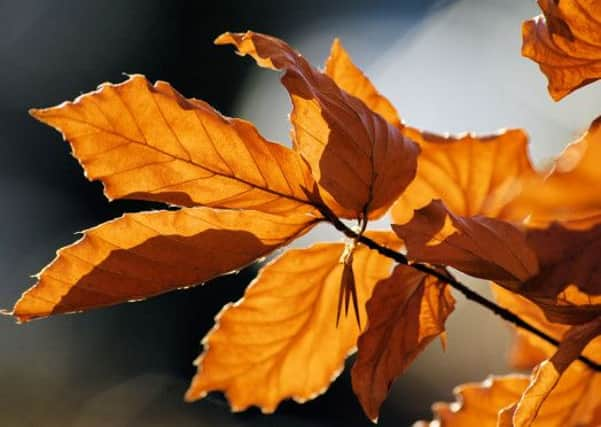Time to prepare the garden for winter


For some weeks now, the leaves have been tumbling off the trees outside our house. We are blessed with some stunning mature trees that give our street so much of its character, but first the sycamore, then the horse chestnut, then more sycamore, then the rest of the horse chestnut leaves relentlessly bury my garden in leaves.
By now, most, but not all, the leaves from these trees have fallen but there is still sufficient to litter the driveway with a generous scattering. Now they are being joined by the steady shower of leaves from the beech trees. It is a lovely sight, but I feel I have to keep getting the leaf blower out to tidy around before they start to decay and leave a dirty mess.
Advertisement
Hide AdAdvertisement
Hide AdNormally, I blast the leaves into a few big piles then steadily add them to the compost bins as time allows. They seem to break down best if I mow them up from the lawn with the mower which pulverises them and mixes in some grass clippings which slowly forms a rich garden compost. Lovely stuff but it will not be ready to use for a year.
As well as tidying up the leaves, now is usually the time to run the mower over the lawn for the last time before the cold weather really sets in. It is tempting to cut it nice and short but it is good practice to set the blades high to avoid damage. After that, I brush off the grass bits from the mower, oil all the moving parts and put it away for winter.
Autumn lacks the excitement of spring, but as things slow down for winter, there is a simple satisfaction in tidying up flower and vegetable beds, digging them over to help the frost break up the clay, and cutting back overgrown deciduous shrubs to keep them tidy and ready for spring.
If you grow blackberries, cut out the stems that have fruited and tie in the new stems ready for spring. With black currants, thin out thick old stems leaving the shiny black stems alone. Strawberries can be trimmed back and any straw removed.
Advertisement
Hide AdAdvertisement
Hide AdRoses, lavatera and Buddleia I cut back by at least half to restore order to the garden, and also to avoid damage from winter winds. I will prune them back harder in the spring. Winter and spring flowering shrubs should be left alone as their wood is ripening for the next flush of flowers. Our Viburnum ‘Bodnantense’ is already in full flower, while the Forsythia is budding up for flowering in March. Definitely do not prune these or you will have no flowers.
With most things put to bed, one thing that is worth having a dabble with is garlic. They like a well-drained site and will rot in poor soil. But with good drainage, individual cloves will soon put up shoots, even in mid-winter. The cold encourages the formation of nicely segmented bulbs far more effectively than spring planted ones. Other than that, it will be time to enjoy the rest of autumn as the coloured leaves continue to fall and the winter draws in...which itself is not necessarily a bad season. Cold crisp days are to be savoured by getting out in the countryside for wonderful walking returning at dusk for fires and hearty meals...with the added bonus of knowing that spring is only around the corner.